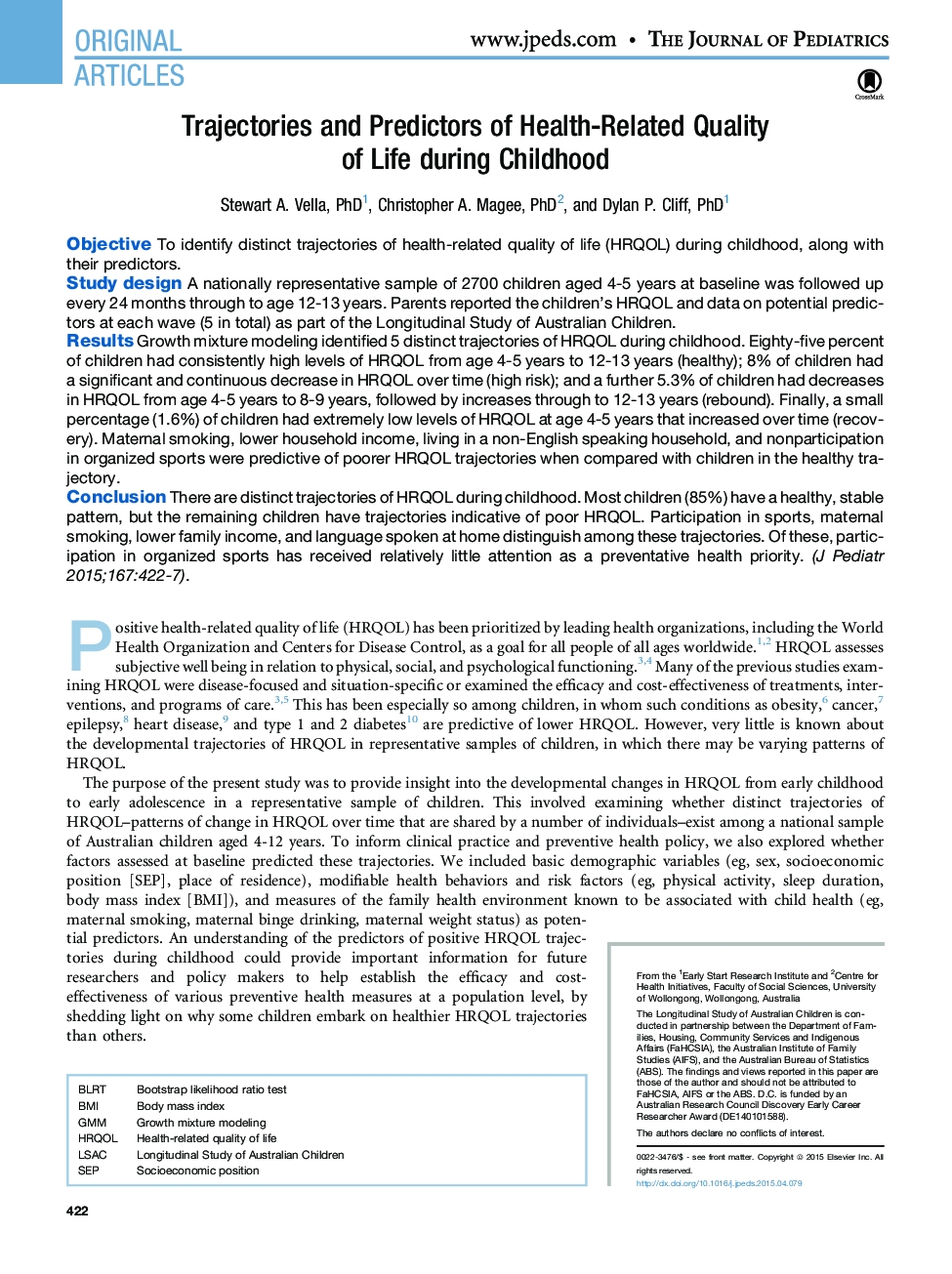| Article ID | Journal | Published Year | Pages | File Type |
|---|---|---|---|---|
| 6220513 | The Journal of Pediatrics | 2015 | 6 Pages |
ObjectiveTo identify distinct trajectories of health-related quality of life (HRQOL) during childhood, along with their predictors.Study designA nationally representative sample of 2700 children aged 4-5 years at baseline was followed up every 24 months through to age 12-13 years. Parents reported the children's HRQOL and data on potential predictors at each wave (5 in total) as part of the Longitudinal Study of Australian Children.ResultsGrowth mixture modeling identified 5 distinct trajectories of HRQOL during childhood. Eighty-five percent of children had consistently high levels of HRQOL from age 4-5 years to 12-13 years (healthy); 8% of children had a significant and continuous decrease in HRQOL over time (high risk); and a further 5.3% of children had decreases in HRQOL from age 4-5 years to 8-9 years, followed by increases through to 12-13 years (rebound). Finally, a small percentage (1.6%) of children had extremely low levels of HRQOL at age 4-5 years that increased over time (recovery). Maternal smoking, lower household income, living in a non-English speaking household, and nonparticipation in organized sports were predictive of poorer HRQOL trajectories when compared with children in the healthy trajectory.ConclusionThere are distinct trajectories of HRQOL during childhood. Most children (85%) have a healthy, stable pattern, but the remaining children have trajectories indicative of poor HRQOL. Participation in sports, maternal smoking, lower family income, and language spoken at home distinguish among these trajectories. Of these, participation in organized sports has received relatively little attention as a preventative health priority.
